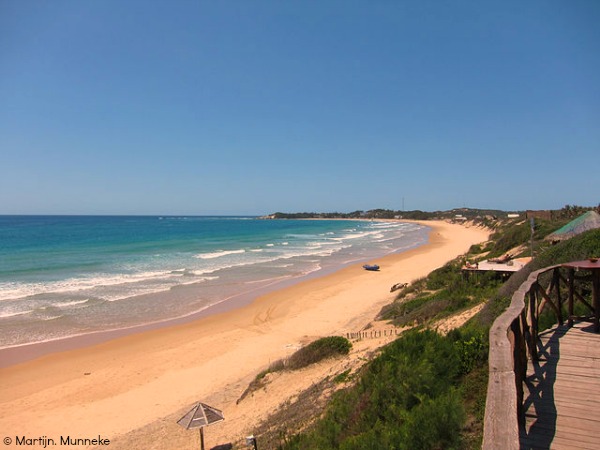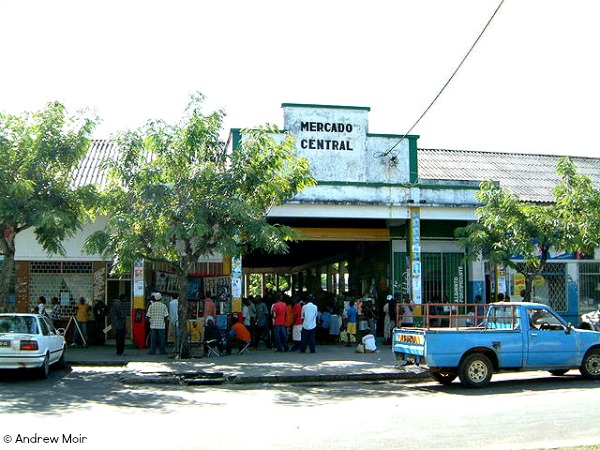 It is perfectly understandable that contemplating South Africa’s winter should fill you with dread. The Western Cape becomes a damp, grey squib, while the Highveld’s icy temperatures go straight to the bone. Mozambique, on the other hand, with its post-card pretty beaches of white sand, coconut trees and turquoise ocean offers an idyllic escape, and one which is entirely attainable.
It is perfectly understandable that contemplating South Africa’s winter should fill you with dread. The Western Cape becomes a damp, grey squib, while the Highveld’s icy temperatures go straight to the bone. Mozambique, on the other hand, with its post-card pretty beaches of white sand, coconut trees and turquoise ocean offers an idyllic escape, and one which is entirely attainable.
Mozambique is a large country with a surface area comparable to that of Turkey! It lies to the north of South Africa and shares boundaries with Northern KwaZulu Natal, Mpumalanga and Limpopo. There are 3 land borders between South Africa and Mozambique and going it overland from South Africa to Southern Mozambique is a popular pilgrimage among South African travel fiends.
Given the vastness of the country it’s easy to imagine that there are endless opportunities for exploring and innumerable points of interest. However, if your goal is to enjoy the sunshine-y weather and take advantage of the picturesque beaches and warm Indian Ocean, a flit through the south will more than suffice.
Maputo
The most southern province in Mozambique is Maputo, and the capital city is found in that province and shares its name. Most people only give the city of Maputo a cursory look over, spending a day or two admiring the beautiful colonial architecture, the impressive Mercado Central (central market) and the old central train station, before heading for the coast. If you consider yourself a twitcher though, get yourself to Inhaca Island because the bird life on this narrow strip of land in the Maputo Bay is home to roughly 300 bird species.
Perhaps the most accessible beach resort for over-landing South Africans is Ponta d’Ouro. It lies just north of the South African border and 130 kilometres south of the city of Maputo. It boasts a stunning beach, wonderful off-shore diving, deep sea fishing and many opportunities for spotting dolphins.
Gaza
Just north of Maputo province is the province of Gaza, yet another trove of gorgeous Mozambican beach destinations. The most frequented spot is known as Xai-Xai (pronounced ‘shy-shy’), 200 kilometres from Maputo (city). Xai-Xai proper is a small port city on the banks of the Limpopo River.

It has a fascinating, bustling market and a mesmerising furniture factory situated under a cluster of cashew trees, while 12 kilometres from the main town is an example of Mozambique’s paradise-worthy beaches.
Praia do Xai-Xai (praia is ‘beach’ in Portuguese) is very popular thanks to the coral reef which runs parallel to the beach. Not only does it provide great conditions for snorkelling, but it acts as a protective barrier between the beach and the feisty ocean beyond the reef. As a result the ocean is not only warm, but calm and ideal for swimming. Furthermore, 2 kilometres down the beach is the Wenela Tidal Pool, a tunnel with a spectacular blow-hole connecting it to the sea.
Inhambane
Next up from Gaza is the province of Inhambane. The province’s capital city is also known as Inhambane, and like many of Mozambique’s cities boasts beautiful crumbling colonial architecture. Four hundred and seventy kilometres from Maputo, the town of Inhambane lies on the Bay of Inhambane and in the heart of Mozambique’s best diving areas. A short way across the sea is one of Mozam’s most famous tourist attractions – the Bazaruto Archipelago. It consists of 6 islands and Mozambique’s only marine reserve. Here you can spot a wealth of reef fish as well as giant turtles and the highly endangered dugong. The most idyllic way to reach the archipelago is via traditional dhow boat.
Other excellent spots near Inhambane are Tofo and Barra, with Tofo taking the cake as the unofficial whale shark capital of the world. You also stand a good chance of spotting giant manta rays.
General Information
Mozambique’s beaches tend to be similar in that they are all lapped by warm Indian Ocean waves, and more often than not, are lined by palm-like coconut trees. Never-the-less, each town and city has its own distinct character – best experienced by a shopping trip to the local market.
Apart from lazing around on the beach – perfectly legitimate way to spend your time on the Mozambican coast – there are great surfing, fishing, snorkelling and diving spots sprinkled up and down the coast.
All of the beach towns will have a range of accommodation options from basic camping facilities to 5 star lodges. While the ‘Africa-ness’ of Mozambique is inescapable, the tourist hot spots will have all the amenities you need from fabulous seafood restaurants to bars and scuba-diving schools.

Essential information
Getting there: There are 3 official border crossing from South Africa into Mozambique. Kosi Bay is the border crossing in KwaZulu Natal, and it’s just outside the town of Kosi Bay. Both the Giriyondo border post (Limpopo) and the Parfuri border post(Mpumalanga) cross from the Kruger National Park in South Africa, to the Parque Nacional do Limpopo in Mozambique.
Currency: The official currency is the Mozambican Metical, but both US Dollars and South African Rands are widely accepted.
Language: The only official language in Mozambique is Portuguese, but in most of the coastal tourist spots there will be plenty of English too. Heading into the north of the country, and more rural parts of the south, even Portuguese becomes rare as communication is dominated by indigenous languages.
Climate: Mozambique has a tropical climate with 2 distinct seasons: the wet season from October to March and the dry season from April to September.








4 Responses to A Holiday in the Sun | A Short Guide to Mozambique